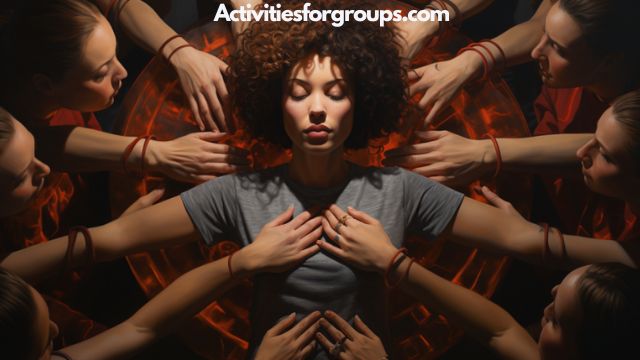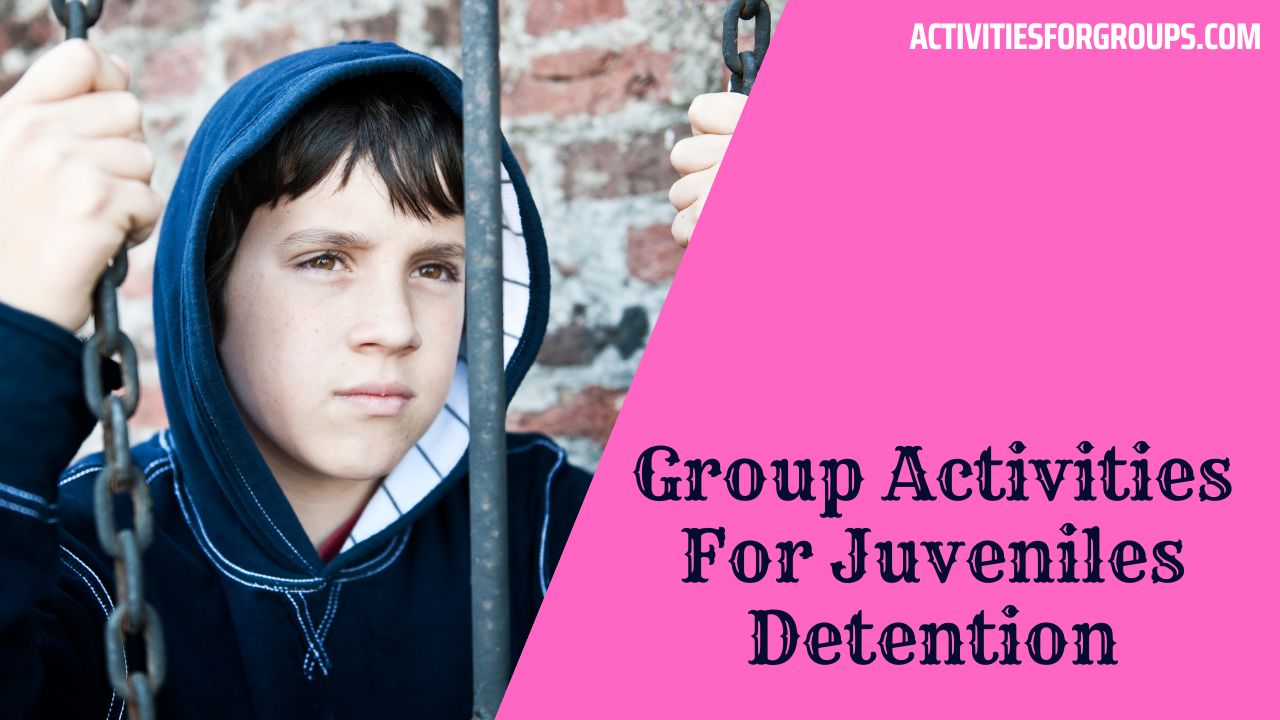Feeling anxious? Group activities can be a great way to reduce those negative feelings. You may think that being around other people would just add to the stress, but research shows that it can actually help you relax and find relief from your anxiety.
Participating in group activities with friends or even strangers gives you the opportunity to focus on something positive and take your mind off of whatever is causing your anxiety.
From creative pursuits to physical activities, there are many types of group activities available for you to choose from.
In this article, we’ll look at the benefits of group activities for reducing anxiety, explore different types of group activities that could work for you, and give strategies on how best to use these activities for calming yourself down.

Benefits of Group Activities for Anxiety
Participating in group activities can help anxious individuals feel less alone, as if a comforting blanket of support embraces them. There are many benefits to engaging in group activities for those with anxiety, such as mindfulness meditation and stress management.
Mindfulness meditation teaches participants how to focus on the present moment and tune into their feelings without judgment. This practice helps reduce stress levels and allows people to become aware of unhealthy coping mechanisms that could be causing their anxiety.
Stress management groups typically focus on teaching practical skills such as healthy communication styles, relaxation techniques like deep breathing or yoga, and cognitive restructuring which involves reframing negative thoughts into more positive ones.
Group activities also create a sense of belonging and provide the opportunity for social connection which is especially important for those with anxiety who may be feeling isolated or disconnected from others.
Additionally, it gives participants an outlet to express themselves among others who understand what they’re going through and this can often lead to profound insights about one’s self and help build lasting relationships with peers.
By participating in group activities, those with anxiety can learn new skills that will help them cope better with stressful situations while developing meaningful connections along the way.
It offers an emotionally safe environment where people can explore different ways of managing their symptoms while being supported by compassionate peers who are going through similar experiences.
Types of Group Activities to Consider
When it comes to group activities that can help reduce anxiety, there are three main types to consider: social activities, creative activities, and physical activities.
Social activities often include things like having a virtual game night with friends or attending an online support group.
Creative activities might be anything from doing an art project together to writing music as a group.
Finally, physical activities can range from going for a walk or jog together to playing a sport virtually.
All of these group activity options can provide an opportunity for connection while reducing stress and anxiety levels.
Social Activities
You’ll feel a sense of relief when you join a group activity; it’s an opportunity to connect with others and can help reduce your anxiety.
Social activities are especially beneficial, as they provide a supportive community for people struggling with anxiety:
Developing relationships:
- Initiating conversations
- Connecting with people in meaningful ways
Participating in activities:
- Sharing experiences together
- Connecting conversations around common interests
Forming bonds:
- Finding comfort in familiarity
- Creating shared memories
Creative Activities
| Engaging in creative activities is a great way to express yourself and can be an enjoyable distraction from anxiety. Creative outlets like music therapy or art therapy are effective ways of managing stress levels and fostering self-awareness. | Music Therapy | Art Therapy |
|---|---|---|
| Improves mood | Reduces stress | Creates connection to emotions |
| Fosters relaxation | Enhances communication skills | Helps find inner peace and contentment |
Music therapy can help restore our emotional balance while art therapy encourages us to explore our feelings and discover new perspectives. Both activities are powerful tools for reducing anxiety, allowing us to find relief and comfort in moments of distress.
Physical Activities
Exercising your body can be a great way to distract yourself from anxiety and bolster your mental health. Physical activities like going for a run or playing a sport can be incredibly helpful in reducing stress levels and improving your overall mental health.
Even if you don’t engage in intense physical activity, something as simple as taking a walk or stretching can help clear your mind and ease anxieties. If you’re feeling overwhelmed, try doing some light exercise that’ll allow you to focus on the task at hand rather than worrying about the future.
Regular physical activity has been shown to have numerous benefits for mental health, so commit to making it part of your daily routine.
Group Activity Strategies to Reduce Anxiety

By fostering a sense of connection through group activities, it’s possible to ease anxiety and reduce stress. Group activity strategies can help build the skills needed to manage anxiety in a safe environment. Three effective techniques include: self-talk, virtual meetings, and deep breathing exercises.
| Self Talk | Virtual Meetings |
|---|---|
| Acknowledge worries and fears | Create an online support network |
| Use positive words with yourself | Share experiences with others remotely |
| Challenge negative thoughts | Show up on time for virtual meetings |
| Speak out your feelings | Participate actively in discussions |
Self-talk involves acknowledging any worries or fears you may have about something then immediately reframing them with positive words and statements. In addition, participating in virtual meetings is another way to create an online support network that shares experiences with each other remotely.
Lastly, setting aside time to practice deep breathing exercises can help everyone stay focused and grounded during group activities. This can be done by finding a comfortable space where people can sit peacefully for 10 minutes a day and take slow breaths while focusing on the present moment.
Group activities are beneficial because they provide individuals with an opportunity to practice their social skills while reducing stress levels at the same time.
By working together towards common goals, it encourages collaboration and creativity which leads to improved relationships between participants as well as increased confidence in one’s own abilities.
Overall, these strategies offer participants ways to relax and reduce their anxiety levels without having to rely solely on medication or therapy alone.
Conclusion
You’ve seen the evidence: participating in group activities can help reduce your anxiety. Whether you choose to join a formal support group, take part in recreational activities, or experiment with art or music therapy, there are plenty of options to try out.
With a few simple strategies and some practice, you can use group activities to help manage your anxiety and find relief.
So don’t wait any longer—get out there and give it a go!




Leave a Reply